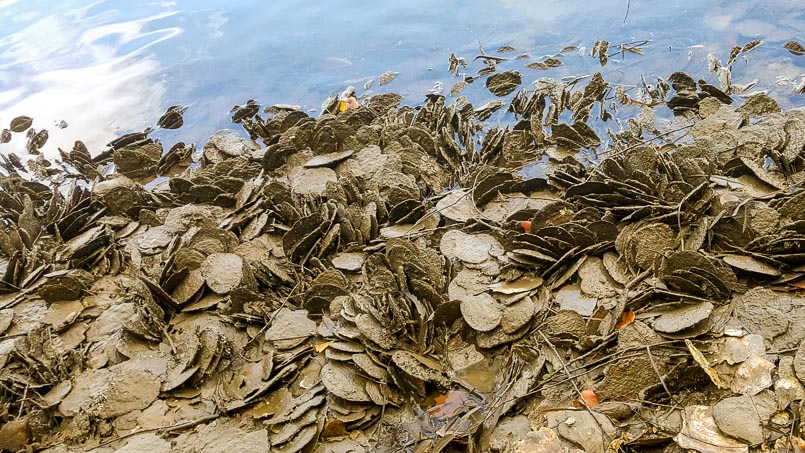New research as part of a DPI Fisheries (DPI) and Southern Cross University (SCU) collaboration has found Leaf Oysters have the potential to survive in areas with poor water quality and may be useful in oyster reef restoration in degraded waterways.
A large-scale oyster reef restoration project is underway in NSW, focused on restoring one of the most impacted marine ecosystems in Australia, natural oyster reefs. The project is a key action under the 10-year Marine Estate Management Strategy.
Oyster reefs are important as they provide food and shelter for fish and other animals, improve water quality and protect shorelines from wave erosion.
Oyster reef restoration is a relatively new idea in Australia with native oysters, including Flat Oysters and Sydney Rock Oysters, typically used for restoration work. Using Sydney Rock Oyster is generally limited by the availability of clean water. Scientists are examining whether another native oyster, the Leaf Oyster, could potentially be used in restoration projects.
The aim of the collaborative project was to increase the knowledge of Leaf Oyster populations, understand the biodiversity utilising them as habitat,and establish the benefits of using Leaf Oysters in reef restoration.
Researchers from DPI and SCU discovered that Leaf Oysters can live and survive in many saltwater habitats such as mangroves, mudflats, sand and rocks.
The study also found the Leaf Oyster has the potential to survive in areas with poor water quality, which may lead to an increase in the use of oyster reef restoration in degraded waterways to improve NSW estuaries.
Leaf Oysters were found in a variety of silty natural and artificial habitats in the Tweed and Brunswick Rivers. This research may lead the way to a possible future native reef forming species.
Leaf Oysters present some unique features, including their specific niche in sheltered estuarine ecosystems and their large shells which form complex three-dimensional habitat for fish and invertebrates.
This is exciting research and another step forward in the aim to return oyster reefs in NSW so they can do their job again, naturally.
Read more marine estate news.
